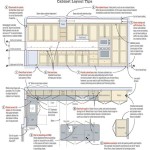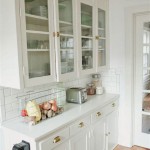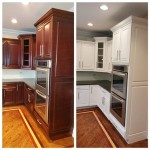The Cost of Wall Kitchen Cabinets Installed
Kitchen cabinets are a significant investment in any home renovation project. They serve both functional and aesthetic purposes, providing storage for kitchen essentials and shaping the overall style of the space. When planning a kitchen remodel, understanding the cost of wall cabinets, including installation, is crucial for budgeting and decision-making. The price of installed wall cabinets can vary widely depending on numerous factors, including cabinet style, materials, size, and location. This article will delve into the key factors influencing the cost, provide a general range, and offer insights to help homeowners make informed decisions.
Factors Influencing the Cost of Installed Wall Cabinets
The cost of installed wall cabinets is influenced by a combination of factors, each contributing to the overall price. Understanding these factors can help homeowners estimate the potential expense and make informed choices based on their budget and preferences.
1. Cabinet Style and Materials
The style and materials used in cabinet construction significantly impact the price. Simple, basic cabinets made from standard materials like melamine or particleboard are generally the most affordable. However, more complex designs, such as raised panel or shaker styles, often involve more labor for crafting and finishing, driving up the cost. Similarly, premium materials like solid wood, high-grade veneer, or custom finishes can increase the price considerably.
2. Cabinet Size and Configuration
The size and configuration of wall cabinets are directly related to the overall cost. Larger cabinets naturally require more materials and labor for construction and installation. Custom cabinets, designed to fit specific dimensions and layouts, can be more expensive than standard-sized units. The layout and complexity of the cabinet configuration, such as the inclusion of corner cabinets, tall cabinets, or specialized features, will also affect the cost.
3. Installation Labor
The labor involved in installing wall cabinets can be a significant portion of the overall cost. The complexity of the installation, the number of cabinets, and the accessibility of the installation area can all influence labor costs. For example, cabinets installed on walls with difficult access or requiring significant modifications may necessitate additional labor time and increase the overall expense.
4. Additional Features and Options
Features like soft-close drawers, specialized hardware, pull-out shelves, or under-cabinet lighting can add to the cost. These features often require additional materials and labor, increasing the overall cost of the cabinets. Homeowners should prioritize features based on their needs and budget, understanding that each additional feature will impact the price.
General Cost Range for Installed Wall Cabinets
Providing an exact cost for installed wall cabinets is impossible without specific details about the project. However, a general range can offer a starting point for budgeting purposes. As a general rule, homeowners can expect to pay between $100 and $500 per linear foot for installed wall cabinets. This range encompasses standard cabinets with basic features and materials to higher-end cabinets with custom designs, premium materials, and advanced features. Remember that this is a general guideline and the actual cost may vary based on the specific factors discussed previously.
Tips for Managing Cabinet Costs
Homeowners can take several steps to manage the cost of installed wall cabinets while achieving their desired aesthetics and functionality.
1. Consider Cabinet Styles and Materials
Carefully evaluating cabinet styles and materials allows homeowners to balance cost with desired aesthetics. Choosing simple designs with standard materials can help reduce costs, while opting for more elaborate styles and premium materials will inevitably increase the price.
2. Optimize Cabinet Configuration
Planning the cabinet configuration efficiently can help minimize costs. Optimizing the layout to maximize storage space while minimizing unnecessary cabinets can reduce the overall material and labor required.
3. Shop Around for Installation Services
Comparing quotes from multiple installation services can help identify competitive rates. It is essential to ensure that all quotes include the same scope of work and materials, allowing for a fair comparison. Additionally, homeowners should consider the experience and reputation of the installer to ensure quality workmanship.
4. Consider DIY Installation
For homeowners with some DIY experience, installing cabinets themselves can potentially save on labor costs. However, this approach requires time, skills, and a commitment to learning the necessary techniques. Homeowners should carefully weigh the potential savings against the time commitment and the risk of potential errors during installation.
How Much Does It Cost To Install Kitchen Cabinets Trendeco

What Is The Average Kitchen Cabinet Cost

Kitchen Cabinets Costs Value Examples
How Much Does It Cost To Install Kitchen Cabinets Trendeco

What Do Kitchen Cabinets Cost Tips To Stay In Budget

Kitchen Installation Cost 2024 Data

How Much Do Custom Cabinets Cost

Average Cost To Replace Cabinets Forbes Home

How Much Do Kitchen Cabinets Cost 2024 S Homeguide

Kitchen Cabinet Installation Cost Modernize
Related Posts








